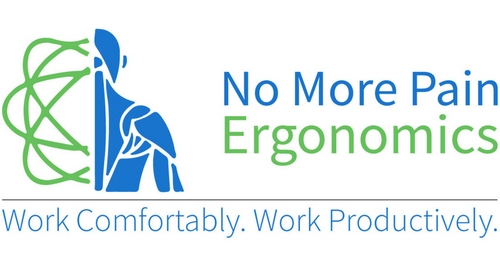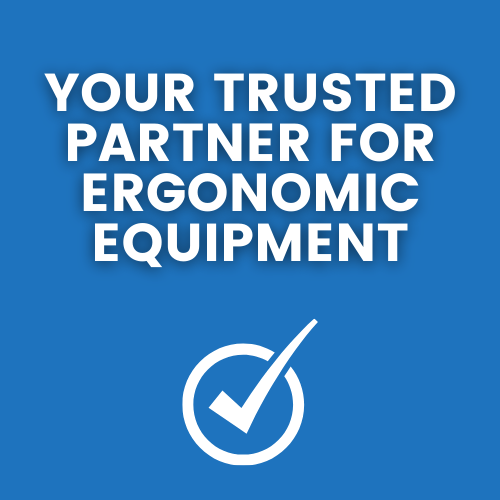-
Shop
- 🔥 Warehouse Clearance Sale 🔥
- Ergonomic Mice
- Ergonomic Keyboards
- Specialised Ergonomic Mice
- Standing Desks
- Ergonomic Chairs
- Laptop Stands & Risers
- Monitor Risers
- Computer Monitor Arms
- Footrests
- Wrist and Forearm Supports
- Back Supports
- Tablet Accessories
- Boardroom Chairs
- Headsets
- Other Ergonomic Equipment
- Online Ergonomic Training Courses
- New Products

- For Customers
- For Business Customers
- For Health Professionals
- About Us
- Reviews
- Product Recommendation Tool
De Quervain's Tenosynovitis
Ergonomic Considerations
What is De Quervain's Tenosynovitis?
De Quervain's Tenosynovitis is a painful repetitive strain injury (RSI) that affects the tendons on the thumb side of your wrist. If you have de Quervain's tenosynovitis, it will probably hurt when you move your wrist, grip objects or even just make a fist.
Symptoms
Pain at the base of your thumb
Swelling at the base of your thumb
Difficulty moving your thumb and wrist when trying to grip or pinch objects
If left untreated, the pain may spread further down your thumb and into your forearm.
What Causes De Quervain's Tenosynovitis?
Overuse of the wrist is the most common cause of De Quervain's Tenosynovitis.
Tendons attach muscles to bone. They act as a rope to pull a bone / joint when the muscle contracts. When you grip, pinch or make a fist with your hand, two tendons in your wrist and lower thumb will glide smoothly through a small tunnel that connects them to the base of the thumb. Repetitive movements such as gripping a computer mouse or moving a computer mouse can lead to irritation of the sheath around the two tendons. This can lead to thickening and swelling of the tendon and thereby a restriction on the thumbs ability to move.
How is De Quervain's Tenosynovitis Treated?
Treatment for de Quervain's tenosynovitis is aimed at reducing the inflammation around the tendon. This is usually achieved through a combination of anti-inflammatory medication and Physiotherapy. Physiotherapy treatment may include:
Immobilizing your thumb and wrist, by placing them in a splint or brace to help reduce movement and allow your tendons to rest.
What Ergonomic Equipment is Recommended for De Quervain's Tenosynovitis?
It is important to consider your working environment when looking at treating De Quervain's Tenosynovitis. We recommend you consult with your GP and a Physiotherapist, in order to get a definitive diagnosis and any medical treatment that you may require. Once your symptoms are beginning to improve, you may want to try to re-introduce using a computer mouse again. Remember to start slowly and gradually increase the amount of time you use your mouse for.
Many people with de Quervain's Tenosynovitis find that the gripping of a computer mouse aggravates their symptoms. If this is the case, you may need to consider changing to an ergonomic mouse that reduces the amount of gripping force required by your thumb to secure the mouse.
Ergonomic mice help reduce the amount of gripping force your thumb needs to apply to hold the mouse.
Ergonomic Mouse
A vertical mouse will help to put your wrist in a neutral posture. This change in working posture will help to alleviate some of the pain symptoms you may be experiencing. Below is our top 3 recommended Ergonomic Mice for De Quervain's Tenosynovitis.
Ease Vertical Mouse
The Ease Vertical Ergonomic Mouse has a lovely curvature that fits ever so nicely in the palm of your hand. The addition of a molded thumb rest also helps to reduce gripping of the mouse by your thumb.
Wireless Model
Left or Right Hand Models
Ideal for De Quervain's Tenosynovitis
ErgoFeel Vertical Mouse
The ErgoFeel Vertical Ergonomic Mouse is a great choice for anyone experiencing De Quervain's Tenosynovitis. The mouse is designed to place your wrist in a more comfortable posture and will help to reduce aggravation of your pain symptoms.
Wired or Wireless Models
Left or Right Hand Models
Ideal for De Quervain's Tenosynovitis
Delux Vertical Mouse
Our customers go crazy for this mouse. Yes, this mouse has a following! People love the design of the Delux Vertical Mouse. It is designed to mimic a joystick / cylinder. This combined with the wrist rest guard at the back, make it really easy to just rest your hand on the mouse and not have to grip. There is something oh so comfortable about this mouse and similar to two mice above, it can help to prevent aggravation of your pain.
Wireless Models
Right Hand Models
Ideal for De Quervain's Tenosynovitis







